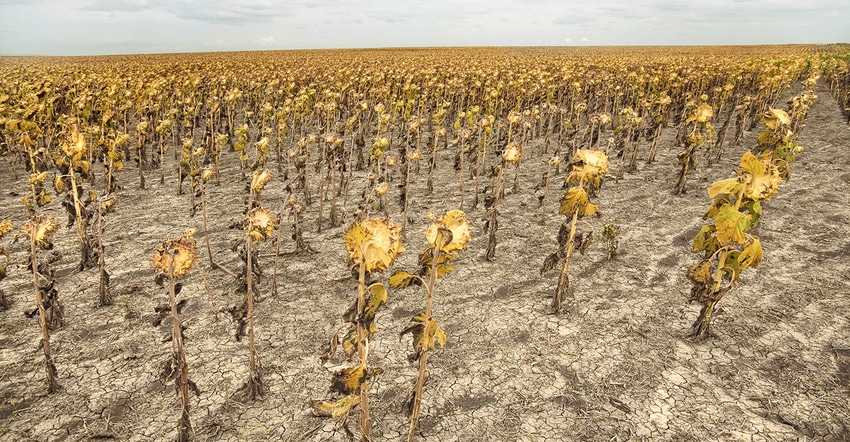February 14, 2018

Odds are good for the drought in North Dakota extending into 2018, says Adnan Akyuz, state climatologist and professor of climatological practice at North Dakota State University.
The Climate Prediction Center is forecasting a greater chance for wetter weather in March, but that’s based on a La Niña pattern in the Pacific. La Niña usually means colder and wetter, but “keep in mind that not all La Niña winters are the same,” Akyuz says.
“Sometimes using the accumulated heating degree day tells us about the overall conditions in winter,” he says.
This winter, Bismarck had 92 fewer accumulated heating degree days compared with the average. Fargo accumulated 218 fewer heating degree days compared with the average.
Snowfall totals across the state also show a non-typical La Niña pattern. For instance, Fargo has received 15.1 inches less snow than average. The season-to-date snow deficit for Bismarck is 15.8 inches.
“The lack of snow is concerning in areas scarred by the worst drought to hit North Dakota since 2006,” Akyuz says. “We do not have the access moisture we had last fall and winter, which was the ninth wettest September-through-February period on record.
“While coming into spring, we are as vulnerable as we get,” he adds. “The National Oceanic and Atmospheric Administration’s estimation of the 2017 drought’s economic impact for North Dakota, Montana and South Dakota is $2.5 billion. If last spring repeats, the accumulated impact of drought could result in even higher numbers this year.”
Based on his experience and the CPC’s past performance, he doesn’t think the center’s forecast for the spring is reliable enough for North Dakotans to lower their guard against a continuation of the 2017 drought into 2018.
It’s best to prepare for a drought, he says.
For the latest information on potential drought conditions and resources for farmers and ranchers to cope with drought, visit NDSU Extension’s drought website at https://www.ag.ndsu.edu/drought/.
Source: NDSU
You May Also Like




